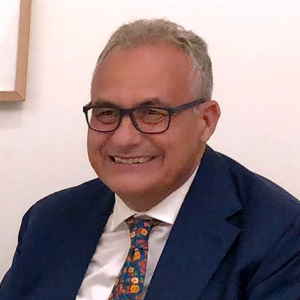
- 24/11/2023
Pierluigi Sabatini
- in Economy, Politics
- 0Comments
 Over the last thirty years the fight against organized crime has moved towards new horizons. Cosa Nostra had demonstrated that the territorial ramifications were only a partial part of an empire that extended beyond Sicily and national borders. This complex stratification requires the use of a new doctrine capable of looking at economic flows within a vast “grey zone” in which mafia proliferation aspires. Starting from the mid-1990s, the fight against crime began to look at the phenomenon of money laundering through the invention of the computer system for reporting suspicious transactions (SOS). This system has proven to be cutting-edge and fundamental, allowing the collection and analysis of data relevant to the investigations. The use of SOS. albeit only partially, it has made it possible to reconstruct the economic and financial activities of the underworld, the latter often anchored to white collar workers and sector experts with the intention of concealing in an increasingly sophisticated and technologically advanced way the flows of money coming from activities illicit. An important element of the proliferation of financial crime has been able to benefit from a pool of people not directly linked to the organization but still inclined to deviant and evasive behavior in order to obtain a profit economic or personal. In relation to what was said previously, it becomes even more necessary for the population to be made aware of civic education and respect for the law. In recent years there have been numerous interventions by experts in the sector, such as Dr. Emmanuele Di Fenza, who have shown the need to strengthen the tool for reporting suspicious activities. This need becomes even more indispensable if certain risk factors are taken into consideration which over the years have not made the work of the SOS fully sufficient. In particular, we need to raise awareness of the concept of “reporting”. To date, the data on reports of suspects are still insufficient to be able to carry out an effective action to combat crime. We must also add the need to increase the specialization of the resources operating in the sector in a multidisciplinary direction, allowing the interaction of human intelligence with information systems to be strengthened.
Over the last thirty years the fight against organized crime has moved towards new horizons. Cosa Nostra had demonstrated that the territorial ramifications were only a partial part of an empire that extended beyond Sicily and national borders. This complex stratification requires the use of a new doctrine capable of looking at economic flows within a vast “grey zone” in which mafia proliferation aspires. Starting from the mid-1990s, the fight against crime began to look at the phenomenon of money laundering through the invention of the computer system for reporting suspicious transactions (SOS). This system has proven to be cutting-edge and fundamental, allowing the collection and analysis of data relevant to the investigations. The use of SOS. albeit only partially, it has made it possible to reconstruct the economic and financial activities of the underworld, the latter often anchored to white collar workers and sector experts with the intention of concealing in an increasingly sophisticated and technologically advanced way the flows of money coming from activities illicit. An important element of the proliferation of financial crime has been able to benefit from a pool of people not directly linked to the organization but still inclined to deviant and evasive behavior in order to obtain a profit economic or personal. In relation to what was said previously, it becomes even more necessary for the population to be made aware of civic education and respect for the law. In recent years there have been numerous interventions by experts in the sector, such as Dr. Emmanuele Di Fenza, who have shown the need to strengthen the tool for reporting suspicious activities. This need becomes even more indispensable if certain risk factors are taken into consideration which over the years have not made the work of the SOS fully sufficient. In particular, we need to raise awareness of the concept of “reporting”. To date, the data on reports of suspects are still insufficient to be able to carry out an effective action to combat crime. We must also add the need to increase the specialization of the resources operating in the sector in a multidisciplinary direction, allowing the interaction of human intelligence with information systems to be strengthened. This would allow us to act even in less attentive areas of the fight against organized crime, paying greater attention to the improper use of non-profit organizations for the financing of terrorism. A further aspect, which should be given more attention, concerns the procurement system where the “mafia bribe” has been found several times within the post-awarding technical costs. This was possible due to the lack of transparency of the actual ownership of whoever wins the contract. The mandatory indication of the beneficial owner could represent an important driving force for eliminating a large portion of criminal profits. Finally, in order to be complete, the fight against criminal organizations should strengthen the integrated supervisory system on the reporting of suspicious transactions and at the same time try to strengthen the tools for criminal action and confiscation. In this way we could have a complete and updated vision of the future challenges that the fight against organized crime will face in the digital age.
This would allow us to act even in less attentive areas of the fight against organized crime, paying greater attention to the improper use of non-profit organizations for the financing of terrorism. A further aspect, which should be given more attention, concerns the procurement system where the “mafia bribe” has been found several times within the post-awarding technical costs. This was possible due to the lack of transparency of the actual ownership of whoever wins the contract. The mandatory indication of the beneficial owner could represent an important driving force for eliminating a large portion of criminal profits. Finally, in order to be complete, the fight against criminal organizations should strengthen the integrated supervisory system on the reporting of suspicious transactions and at the same time try to strengthen the tools for criminal action and confiscation. In this way we could have a complete and updated vision of the future challenges that the fight against organized crime will face in the digital age.


